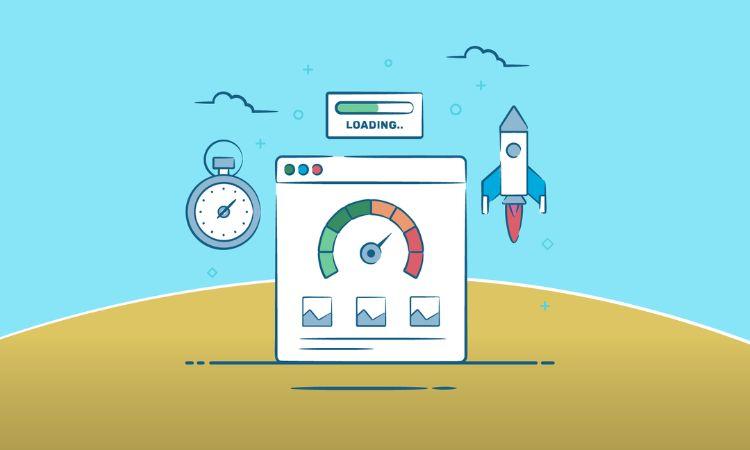How Website Speed Impacts Conversions and How to Fix It on Squarespace

Have you ever got frustrated with the website and wanted to close the page because the page just would not load? Frustrating, right? To businesses, every wasted second is not just an irritation, but a lost chance to turn the visitors into customers. Website response time does not only imply matters of functionality in today’s modern world but rather the key to the success of a website.
According to recent studies, 53% of mobile users will navigate away from a site if it takes more than three seconds to load. Now imagine your own website. Of course, it is crucial to ask: Is it fast enough to meet these expectations? It becomes even more important if you are working on platforms such as Squarespace. Squarespace provides clean and attractive templates and intuitive tools; however, all of them need to be made as fast as possible to work in present conditions where speed is equal to conversions.
This blog post is a detailed analysis of how page speed affects conversions and what Squarespace users can do to improve it.
Key Takeaways
- Website speed has a direct impact on your conversion rates, customer experience, and SEO rankings.
- Squarespace has built-in features, but there is always room for change to make it stand out.
- A faster website is not limited to purely technical metrics– this is about providing value for your target audience.
Before you go straight to the techniques, understand why speed matters for conversions.
Why Speed of Website Matters for Conversions
Be specific: You’re a customer browsing online shopping sites. You come across a product that interests you, follow the hyperlink, and… wait. Research indicates that a delay of even 100 milliseconds (a fraction of a second!) can reduce conversion rates by 7%. On platforms like Squarespace, where design and ease of use are crucial, speed becomes the difference between a click and a purchase.
The Psychology Behind Speed
People are running after instant satisfaction. When a site takes a short time to display its content, it conveys the message of professionalism. On the other hand, long loading times annoy users and make them lose confidence in the brand or totally switch off.
The Data Doesn’t Lie
Amazon and Walmart: Each of these giants stated that the improvement of the speed contributes to increased conversion rates. To be more specific, Walmart stated that for every second of improvement in loading time, its conversion rate was higher by 2 percent.
Google: Google considers the page’s speed in its algorithm, which affects organic traffic, which directly depends on SEO.
For businesses on Squarespace, this means two things: faster websites rank higher on search engines and keep visitors engaged, both of which boost conversions.
Techniques to Improve Website Speed on Squarespace
Having understood the importance of Squarespace speed optimization, it is now time to investigate how to make your Squarespace site blazing fast.
1. Optimize Images
Images top the list among the most resource-intensive elements that can be used on a given page. Use Squarespace’s built-in image compression or resize and compress images externally before uploading them. There are tools like TinyPNG or ImageOptim that can help.
2. Choose Lightweight Templates
Currently, Squarespace has numerous templates, but not all of them are optimized for speed. Focus on simple designs such as “Brine” or “Tremont” that are centered around performance.
3. Limit Third-Party Integrations
Third-party plugins and scripts can slow down your site. Review each integration and remove unnecessary components.
4. Use Content Delivery Networks (CDNs)
Squarespace automatically uses CDNs to distribute content efficiently. That’s great, but you can improve further by keeping the content on your site structured and not cluttering any space.
5. Minimize Custom Code
Adding custom JavaScript or CSS? Keep it minimal. When there is too much code it slows down the speed of your site.
6. Enable AMP for Blog Posts
Accelerated Mobile Pages (AMP) are light versions of web pages for mobile devices. Squarespace has implemented AMP for blogs, enabling this to provide mobile visitors with faster access to content.
7. Test and Monitor Regularly
Web-based tools such as Website Speedy can assess your site’s speed. With testing, you can see where and when you have a speed problem before it affects your conversion rate.
The Ripple Effect: Speed and Customer Experience
Fast-loading sites don’t just convert more visitors—they create loyal customers. When your site loads swiftly and smoothly, it can make a lasting impression. This makes people able to navigate through it, come back to it repeatedly, and even suggest it to others.
Boosting SEO Rankings
Google favors fast-loading sites, which means that enhancing the speed of websites will improve their ranking in search engines. The higher the website rankings, the higher the exposure, visitors, and, in turn, sales.
Reducing Bounce Rates
A fast site keeps visitors engaged. Studies show that a one-second improvement in load time can increase session length by up to 20%.
Final Thoughts
For anyone using Squarespace, it is important to note there are a number of ways to improve the functionality of your site and boost conversion rates. Making small improvements when deciding on the available options can lead to a big effect, be it in the choice of images or in selecting the right layout.
Well, is your Squarespace site fast enough? If not, the next step has to be initiated. Keep in mind that it is not just a site that loads quicker, but it makes people trust it, engage with it, and ultimately turn them into loyal customers.
What are you waiting for? Get this going as fast as you can and see your conversions climb to the top!
Keep an eye for more news & updates on USATechMagazine!





